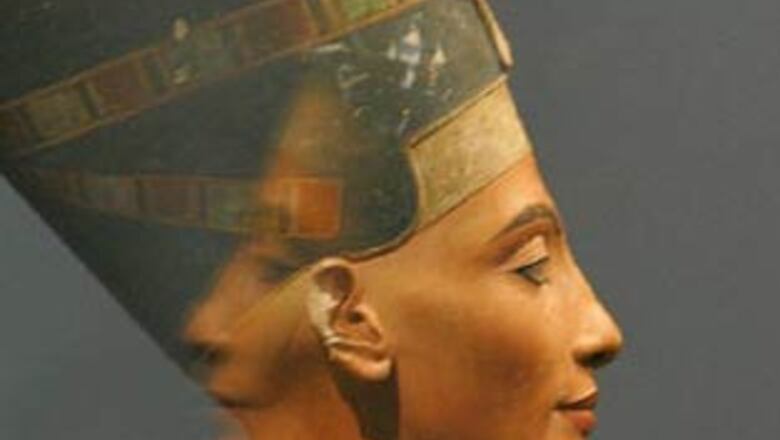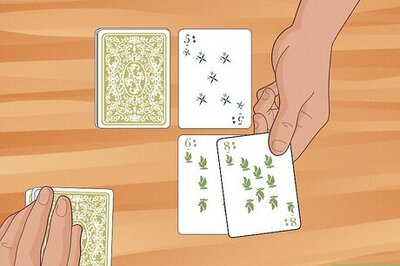
views
Berlin: An ancient Egyptian queen regarded as the Mona Lisa of the ancient world may not have been such a looker after all, German scientists said on Tuesday.
A delicately carved face in the limestone core of the famous bust of Nefertiti suggests the royal sculptor at the time may have smoothed creases around the mouth and fixed a bumpy nose to depict the "Beauty of the Nile" in a better light.
The bust of Nefertiti was found in Egypt in 1912 at Tell el-Amarna, the short-lived capital of Nefertiti's husband, the Pharaoh Akhenaten. It is now housed in Berlin's Altes Museum.
"It is possible that the bust of Nefertiti was commissioned (probably by Akhenaten himself) to represent Nefertiti according to his personal perception," Alexander Huppertz, director of the Imaging Science Institute in Berlin, and colleagues reported in the journal Radiology.
The 50 cm (20-inch) bust, discovered by German archeologist Ludwig Borchardt during excavation of the studio of the famous royal sculptor Thutmose, consists of a limestone core covered in layers of stucco of varying thickness.
Researchers first analysed the bust using CT technology in 1992 but advances in technology allowed Huppertz and colleagues to delve deeper into the sculpture.
Their analysis showed that compared to the outer stucco face, the inner face had less prominent cheekbones, a slight bump on the ridge of the nose, creases around the corner of mouth and cheeks, and less depth at the corners of the eyelids.
The changes were possibly made to make the queen adhere more to the ideals of beauty of the time, the researchers said. "Different fissures parallel to the surface were found in the shoulders, the lower surfaces of the bust, and the rear of the crown," the researchers wrote.
Ever since its first public exhibition in 1923, the precision of the 3,300-year-old sculpture's symmetrical lines and its finely wrought features have drawn thousands of admirers from around the globe.
Egyptian officials have named the Nefertiti bust and the Rosetta Stone at the British Museum in London among five precious artifacts held abroad which they want to bring home, with mediation from the U.N. cultural agency UNESCO.
















Comments
0 comment